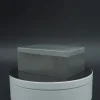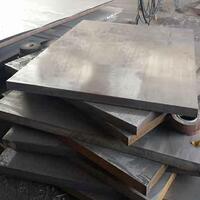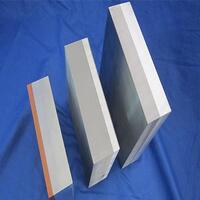1. Introduction
Just 48 hours ago, the world’s tallest timber-hybrid skyscraper—Ascent MKE in Milwaukee—made headlines for integrating a striking corten steel facade alongside mass timber construction. This fusion of organic warmth and industrial resilience exemplifies how metal clad systems are no longer just functional coverings but strategic design elements in cutting-edge architecture. But what exactly is metal clad, and why is it gaining traction in high-performance building?

In short, ‘metal clad’ refers to structures or components where a base material—often steel, aluminum, or another alloy—is bonded with a protective or decorative outer layer of a different metal. This process, known as cladding, enhances corrosion resistance, thermal performance, and visual appeal without sacrificing structural integrity.
2. The Meaning and Mechanics of Clad Metals
When people ask, ‘What is metal clad?’ or ‘What is clad metal meaning?’, they’re usually referring to composite materials engineered for specific performance traits. For example, aluminum clad stainless steel combines the strength of stainless steel with the lightweight, corrosion-resistant properties of aluminum. Similarly, copper-nickel clad or titanium clad plates are used in marine and chemical environments where extreme durability is non-negotiable.
These clad metals aren’t just layered—they’re metallurgically bonded through techniques like roll bonding, explosion welding, or electroplating. This ensures the layers act as a single unit under stress, heat, or weather exposure.
3. Metal Clad in Advanced Architectural Design
Today’s architects are pushing boundaries with metal clad walls, roofs, and facades that do more than look good—they perform. Take the corten steel siding now trending in luxury eco-homes. Corten steel forms a stable rust-like patina that eliminates the need for painting while offering decades of weather resistance. Though corten siding cost can be higher upfront, its longevity and low maintenance make it a smart investment.

Other standout applications include:
- Zinc clad dormers and zinc clad roofs, prized for their self-healing oxide layer and elegant matte finish
- Copper siding that evolves from bright orange to deep green over time, adding character to heritage-inspired builds
- Vertical standing seam metal siding and colorbond standing seam systems that provide seamless, watertight exteriors with minimal joints
- Exterior corrugated metal siding and corrugated steel facade panels that deliver industrial-chic aesthetics with robust wind and impact resistance
Even small details matter: pac clad coping, pac clad column covers, and pac clad hwp (horizontal wall panel) systems offer refined transitions and clean lines in commercial projects.
4. Beyond Aesthetics: Functional Metal Clad Systems
Metal clad isn’t just skin-deep. In infrastructure and industrial settings, it plays critical functional roles. Aluminum clad pipe insulation, for instance, wraps HVAC or process piping with a reflective aluminum jacket over fiberglass or foam—boosting thermal efficiency while resisting moisture and UV damage.

Similarly, metal clad electrical wire (like aluminum clad steel wire or cu clad wire) is engineered for high conductivity and mechanical strength, commonly used in grounding and telecommunications. And in manufacturing, clad metal sheets—such as stainless clad aluminum or 2024-T3 clad aluminum plate—are essential for aerospace and automotive parts requiring both light weight and surface hardness.
Even sheds and utility buildings benefit: a metal clad shed built with steel plate or aluminum diamond tread plate offers security, fire resistance, and rapid assembly.
5. Material Innovation Meets Sustainability
Recent advances focus on sustainability without compromising performance. Steel Clad Inc. and other innovators are using recycled content in clad steel products, while new alloys like zinc-nickel alloy coatings extend service life in harsh climates.
Moreover, metal weatherboard and standing seam facade systems contribute to LEED certification by enabling rain-screen principles—creating ventilated cavities behind the cladding that reduce moisture buildup and improve energy efficiency.
For DIY builders or contractors sourcing materials, options like 3mm aluminium checker plate, 316 stainless steel plate, or mild steel plate are widely available ‘near me’ or online, often sold as ‘steel plate for sale’ with custom cutting services for precise metal sheet cutting needs.
6. Conclusion
From the soaring corten steel facade of Ascent MKE to the humble aluminum clad wire in your home’s electrical system, metal clad technology bridges form and function across countless niches. Whether you’re designing a steel clad house, specifying a zinc metal siding for a boutique hotel, or selecting clad metal for industrial piping, understanding the ‘metal clad meaning’ unlocks smarter, more resilient, and visually compelling solutions. As material science evolves, expect even more hybrid innovations—like inconel weld overlay claddings or titanium alloy plate composites—to redefine what’s possible in architecture and engineering.
Our Website founded on October 17, 2012, is a high-tech enterprise committed to the research and development, production, processing, sales and technical services of ceramic relative materials such as What. Our products includes but not limited to Boron Carbide Ceramic Products, Boron Nitride Ceramic Products, Silicon Carbide Ceramic Products, Silicon Nitride Ceramic Products, Zirconium Dioxide Ceramic Products, etc. If you are interested, please feel free to contact us.
